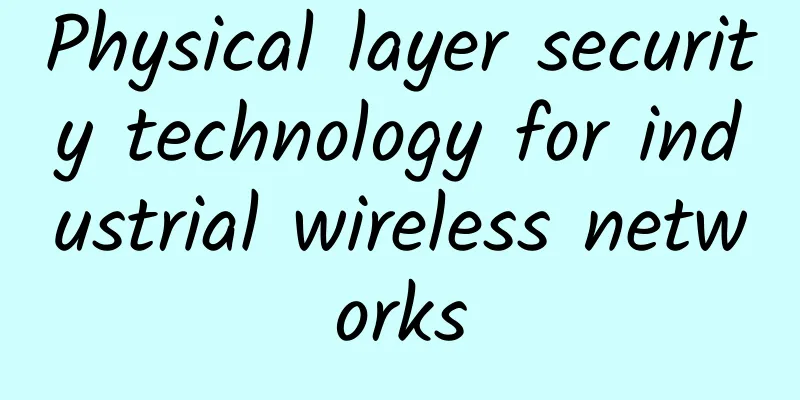How 5G will change engineering design

|
The past decade has seen unprecedented technological advancement, including the widespread use of smartphones, billions of IoT devices deployed across every industry sector, the introduction of Industry 4.0, and the rise of edge computing. But this technological growth is not slowing down. While this is beneficial in many ways, it can also put a strain on infrastructure. It’s clear that unless this infrastructure problem is addressed head-on, the next generation of technology will not work. A particularly troublesome factor is the introduction of cloud computing, as it eliminates the need for individual devices to process their own data. While this greatly simplifies their design and reduces costs, it also requires higher bandwidth and lower latency. Edge computing is a solution that could alleviate some of the issues facing cloud computing. However, because edge computing devices may be located within a local network, bandwidth limitations may result in degraded performance for other internet-connected devices connected to the same network. Network Technology ChallengesThere are many network technologies, each with its own advantages and disadvantages. The main network technologies in widespread use include Wi-Fi, cellular, long-range (LoRa), and cable (fiber optic). Wi-Fi offers an excellent balance between speed, latency, and cost, which is why it dominates the home wireless market. But the higher frequencies used by 5 GHz and 6 GHz reduce its effective range. Cellular networks such as 4G were developed with mobile technology in mind, and as such, they offer excellent features as well as range and device support. However, they are impractical for real-time IoT applications. They have great download speeds but suffer from latency due to long wait times for time slots. LoRa radio is a networking technology that is becoming increasingly popular in remote IoT applications due to its low energy requirements and long-range capabilities (over 15 km in some cases). To reduce energy consumption, LoRa has an extremely small bandwidth, suitable only for sending bytes of data (it is not suitable for live video). As a result, LoRa is often found in remote industrial locations such as oil pipelines, farms monitoring large tracts of land, and environmental sensors identifying potential forest fire risks. Fiber optics is the ultimate solution in terms of speed and latency because the use of a physical connection eliminates the need for high-powered antennas, sensitive receivers, and complex network hardware. However, the physics of the cable means that only devices that are physically connected to the cable can use the network. What does 5G offer?Unlike its predecessors, 5G is designed with connectivity in mind, with a focus on IoT devices, edge computing, and cloud computing. Therefore, its main goal is to provide customers with higher speeds, lower latency, and infrastructure that can improve network services. 5G utilizes higher frequencies in the microwave region, which increases its bandwidth (up to 20 Gbps) and utilizes multiple non-overlapping channel frequencies. In addition, the use of MIMO antennas and beamforming further reduces interference between devices operating on the same channel. 5G also uses a variety of technologies to significantly reduce connection latency, including network slicing, non-fixed time slots, and local edge computing services. Network slicing allows 5G networks to create separate channels, minimizing the number of devices using any one channel at the same time, while the introduction of non-fixed time slots enables 5G devices to transmit data when needed. Finally, in 5G networks, data-heavy cloud services can be brought closer to users, meaning connected clients can access resources faster. Instead of going from a device to a cell tower to the internet and back again, clients can go directly to a cell tower and get the data they need. Future applicationsWhile 5G is still in its infancy, many applications can greatly benefit from the high-bandwidth, low-latency capabilities it provides. One such example is vehicle-to-everything (V2X). A major challenge facing automakers is the development of autonomous driving and collision avoidance technology. Current solutions must operate independently, which means they often rely on numerous imaging technologies, including radar and lidar. While this is good for handling unusual situations, it still sees limited response times and introduces unknowns. However, V2X proposes a solution where all devices (including all vehicles, pedestrians, road signs and traffic control systems) can report key data such as location, direction and speed. Using 5G network data, vehicles on the road can predict collision risks well in advance, while also warning pedestrians and other vehicles of their own location, speed and direction. Therefore, V2X provides many safety and traffic management opportunities due to the low latency and large device support provided by 5G. Industrial sites are another promising application for private 5G networks, where operators can create and manage their own 5G networks. Many industrial processes often rely on real-time data acquired from machines, which is why industrial systems have historically been difficult to run on general-purpose LAN networks. The large number of simultaneous connections and the use of autonomous delivery systems that can move throughout the factory also make technologies such as Wi-Fi unsuitable. The ability of 5G network devices to roam between access points without losing connectivity and provide low latency makes 5G ideal for use in industrial sites. Such a network can not only support a large number of devices, but also prioritize traffic based on its importance. Better latency can be provided for real-time data packets. In addition, the use of edge computing services located at various access points can reduce latency while reducing the pressure on the larger network. The introduction of IoT devices has also opened up new possibilities for urban management and planning, giving rise to a new area of IoT: smart cities. Arguably, the two biggest challenges facing urban management involve traffic management and pollution. Cities can manage traffic by monitoring vehicles and road use, and they can manage pollution through the widespread deployment of air quality sensors. However, current network infrastructure cannot handle thousands of sensors across a city, and the security challenges posed by such devices mean that whatever network is used must be built on security. 5G networks are well suited for the development of smart cities not only because they can handle thousands of devices and provide large bandwidth, but also because they can run virtual networks, deploy strong security practices, eliminate the need for passwords and API keys, and support physical device authentication. 5G offers engineers exciting new possibilities due to increased bandwidth, improved latency, and the ability to support edge computing. Additionally, the ability to create private 5G networks opens up new opportunities for businesses and manufacturers. Finally, the ability to run services at the edge can improve cloud-based applications for millions of customers. |
<<: Why use MAC address when we have IP address?
Recommend
Justhost: Dallas data center VPS 50% off for a limited time, starting at $2.16/month, 24 data centers available in the United States/Russia/UK/Germany/Hong Kong, China
JustHost.asia recently offered a limited-time 50%...
Inspur HCM Cloud is officially launched, ushering in the era of professional human resource management in the cloud
[51CTO.com original article] The socialization, i...
Juniper CEO: The strategy driving Juniper's general direction is cloud
Juniper announced its first quarter 2017 revenue ...
What exactly is HTTP3 that international companies such as Google are beginning to support?
There has been a lot of news about HTTP/3 in rece...
The difference between SDN and traditional network operation and maintenance
1. Pain points of traditional network operation a...
Huawei's new generation of 400GE data center switches enable new infrastructure and stimulate new momentum
[[334907]] Hu Kewen, President of Huawei's Da...
Why are operators so "overwhelmed" by frequent and large-scale network failures?
Telecom's recent situation is a bit like &quo...
Network programming - starting from establishing a TCP connection
[[388071]] Preface Network programming is somethi...
At the 2017 Asia Pacific CDN Annual Conference, Yunfan Accelerator was awarded the title of "Excellent Service Quality Enterprise"
On November 14, 2017, the 2017 Asia-Pacific CDN A...
Why is the 4G network speed slowing down now? The Ministry of Industry and Information Technology gave the answer, netizens: It's really realistic
I don't know if you have noticed a significan...
Factors that cannot be ignored in enterprise development strategy: the outstanding value of APM in cloud migration
IT departments are becoming more and more strateg...
Elisa's 5G network now covers half of Finland's population
Finnish operator Elisa said its 5G network has be...
The "highest academic degree dialogue" in the history of Huawei Cloud City Summit, doctors in four major fields talked about how to make scientific research benefit society
With the popularization of emerging technologies ...
Ministry of Industry and Information Technology: my country has built nearly 850,000 5G base stations
According to the Ministry of Industry and Informa...
Explore different VGG networks. What do you discover?
1 Question Explore different VGG networks. 2 Meth...









